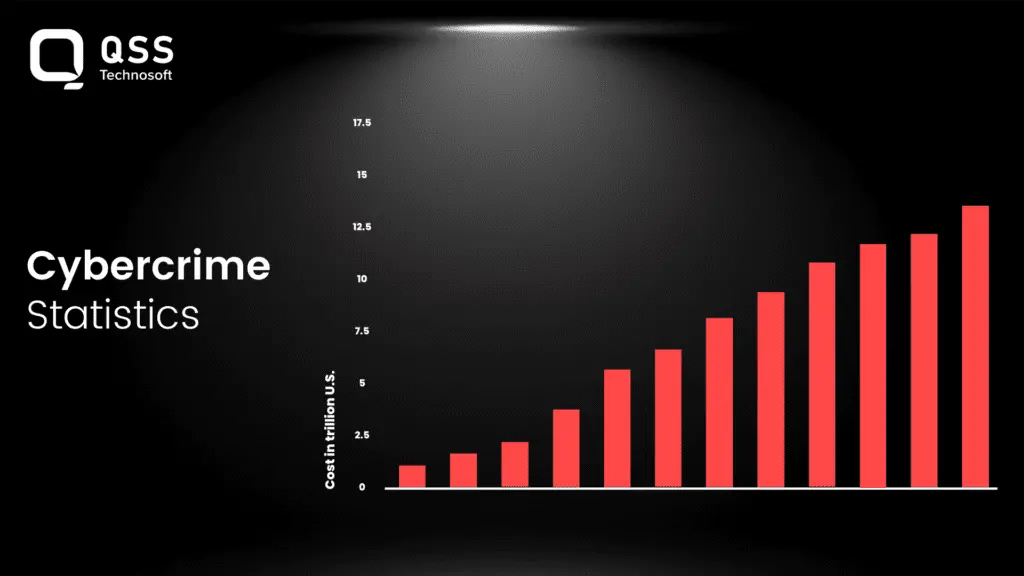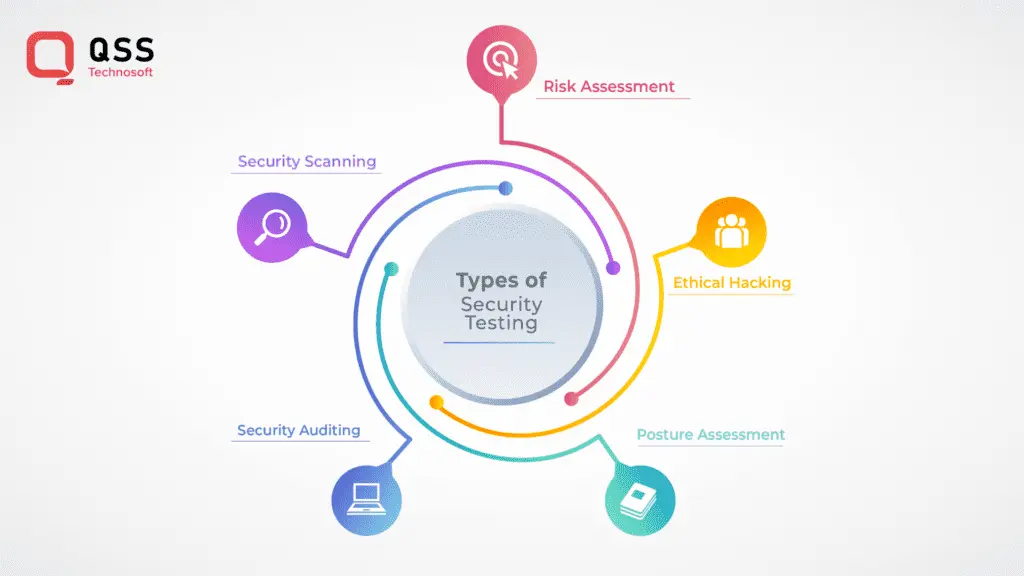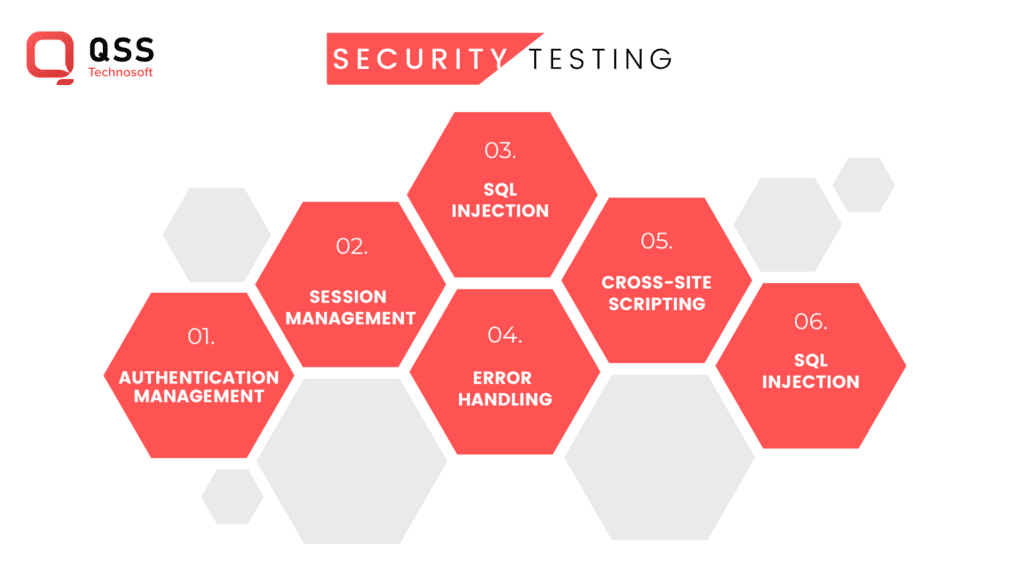Are you aware that in this technology-growing world, the safety of our virtual systems and applications performs an immensely big position in our everyday lives? Because who wants to compromise with their digital information? With the non-stop evolution and increasing sophistication of generation, cyber threats focused on susceptible systems are at the upward push. Recent statistics showcased us that the worldwide price of cybercrime is projected to reach a spectacular $10.5 trillion annually via 2025, as mentioned by way of Cybersecurity Ventures. This statistic serves as a stark reminder of the pressing need for complete security Testing as well as checking-out practices to combat cyber threats efficiently.

So, how are we able to ensure the safety and protection of our virtual assets?
When it comes to defending our sensitive information and stopping cyber-attacks, safety is emerging as a critical line of protection. By very well evaluating software programs, structures, and networks, protection checking out goals to pick out vulnerabilities and weaknesses that could be exploited by hackers.
This proactive approach is crucial in safeguarding our digital systems and ensuring the confidentiality and integrity of our data.
Make sure to read this blog till the end because today we are going to provide you a guide on why security testing is important.
Read Also: Uncover the 15 Best Testing Practices for Salesforce App Development
Understanding Security Testing
Security testing is a process that assesses an organization’s security posture and helps identify potential vulnerabilities and risks. It involves testing software applications, networks, and systems to ensure that they are secure and free from vulnerabilities that could be exploited by attackers. It can be conducted either manually or through automated tools.
Real-life examples of security testing include penetration testing, vulnerability scanning, and risk assessments.
- For instance, a company might hire a security testing firm to conduct a penetration test on their network to identify vulnerabilities that could be exploited by cybercriminals.
- Alternatively, they may use a vulnerability scanning tool to automatically scan their systems for known vulnerabilities and weaknesses.
- Finally, a risk assessment would be conducted to identify potential risks and threats to a company’s security posture and help develop a mitigation strategy.
There are several different types of security testing that can be utilized, depending on the specific needs of an organization. These include:

1. Vulnerability Assessment
Vulnerability assessment is a systematic process of identifying and prioritizing vulnerabilities within a system or application. It involves the use of automated tools and techniques to scan for common vulnerabilities, such as weak passwords, outdated software, or misconfigured system components. By conducting regular vulnerability assessments, organizations can identify and address potential security weaknesses before they are exploited.
2. Penetration Testing
Penetration testing, commonly known as ethical hacking, involves simulating real-world attacks to evaluate the effectiveness of the organization’s security controls. It helps organizations understand how their systems would respond to an actual attack and identifies potential security gaps. By mimicking the techniques used by hackers, organizations can proactively address vulnerabilities and strengthen their security posture.
3. Security Code Review
Security code review is a manual or automated process of examining the source code of an application to identify potential security vulnerabilities. This process involves analyzing the code for common coding errors, such as buffer overflows or SQL injection vulnerabilities. By conducting code reviews, developers can identify and fix security issues early in the development cycle, reducing the chances of vulnerabilities being introduced into the production environment.
4. Security Architecture Review
Security architecture review is an evaluation of the overall security design of a system or application. It assesses whether the implemented security controls are appropriate and effective in mitigating potential risks. By reviewing the security architecture, organizations can ensure that security controls are implemented in a way that aligns with industry best practices and standards.
5. Ethical Hacking
Ethical hacking, also known as penetration testing or white hat hacking, is a legal and authorized practice of assessing the security of an organization’s systems, networks, and applications. Ethical hackers are skilled professionals who use the same techniques and tools as malicious hackers to identify vulnerabilities and weaknesses in order to help improve the organization’s security defenses.
6. Posture Assessment
Posture assessment, also known as vulnerability assessment, is the process of evaluating an organization’s security posture to identify potential weaknesses or vulnerabilities. This assessment involves collecting information about the organization’s network infrastructure, systems, and applications and analyzing them to determine if any security gaps exist.
7. Security Auditing
Security auditing is an independent evaluation of an organization’s information systems, policies, procedures, and controls to assess their effectiveness in mitigating security risks. It involves reviewing the organization’s security program, conducting interviews with key personnel, and examining evidence such as system logs and configuration files.
Read Also: How to Build an App like Trezor Cryptocurrency Wallet?
Reasons Why Security Testing is Important
Lets understand key reasons why security testing is important.

1. Protection against potential breaches
One of the primary reasons why security testing is crucial is that it helps protect against potential breaches. By simulating real-world attack scenarios, security testing identifies vulnerabilities in a system that attackers could exploit. By addressing these vulnerabilities before deployment, organizations can significantly reduce the risk of a breach and the subsequent damage it can cause.
2. Safeguarding sensitive data
Sensitive data, such as customer information, financial data, and intellectual property, is a prime target for hackers. Security testing ensures that this sensitive data is adequately protected by identifying any weaknesses in the system’s security controls. By strengthening these controls, organizations can minimize the risk of data breaches and the resulting reputational and financial damage.
3. Compliance with regulatory requirements
With the increasing number of laws and regulations governing data privacy and security, organizations must comply with these requirements. Security testing plays a vital role in ensuring compliance with regulations such as the General Data Protection Regulation (GDPR) and the Payment Card Industry Data Security Standard (PCI DSS). By conducting security tests, organizations can identify any compliance gaps and take appropriate actions to rectify them.
4. Maintaining customer trust
Customer trust is a cornerstone of any successful business. If customers do not feel confident in the security of a product or service, they will be reluctant to engage with the organization. Security testing provides reassurance to customers that their data is being adequately protected. By demonstrating a commitment to security, organizations can build and maintain trust with their customers, leading to increased customer loyalty and satisfaction.
5. Cost savings in the long run
While security testing may require additional resources and investment upfront, it can result in significant cost savings in the long run. Addressing security vulnerabilities early in the development process is far less costly than dealing with the repercussions of a breach, which can include financial losses, legal expenses, and damage to the organization’s reputation. By investing in security testing, organizations can prevent potential breaches and save themselves from costly cleanup operations down the line.
6. Identifying system weaknesses
Security testing goes beyond identifying vulnerabilities in software applications. It also helps identify weaknesses in the overall system architecture, network infrastructure, and employee behavior. This holistic approach ensures that all aspects of an organization’s security posture are evaluated and improved. By addressing system weaknesses, organizations can prevent potential breaches from occurring and strengthen their overall security posture.
7. Staying ahead of evolving threats
The threat landscape is constantly evolving, with attackers developing new techniques and tactics to breach systems. Security testing helps organizations stay ahead of these threats by simulating real-world attack scenarios and identifying potential weaknesses in the system. By proactively addressing these weaknesses, organizations can significantly reduce the risk of falling victim to emerging threats and ensure they are well-prepared to defend against evolving attack vectors.
Read Also: How to Build an App like Exodus Cryptocurrency Wallet?
Best Practices for Conducting Effective Security Testing
Conducting security testing requires careful planning and execution. Here are some dos and don’ts to keep in mind while going for security testing:
Dos:
- Establish clear objectives: Clearly define the scope and goals of the security testing. Identify which areas need to be tested, such as network security, application security, or data security.
- Conduct regular security assessments: Security testing should not be a one-time activity. Regular assessments should be conducted to ensure that the systems and applications remain secure over time. This helps in identifying new vulnerabilities that may arise due to software updates or changes in the threat landscape.
- Adopt a systematic approach: Follow a structured and systematic approach to security testing. This includes conducting a thorough risk assessment, identifying potential threats and vulnerabilities, and prioritizing them based on their impact and likelihood.
- Collaborate with developers: Involve developers throughout the security testing process. This can help in identifying and fixing vulnerabilities early on in the development cycle, saving time and effort.
- Simulate real-world attacks: Use realistic attack scenarios to mimic real-world threats. This can help in identifying vulnerabilities that may be missed during traditional testing techniques.
Don’ts:
- Assume everything is secure: Never assume that the systems and applications are secure just because they have passed previous security tests. New vulnerabilities can emerge at any time, and regular testing is necessary to identify and mitigate them.
- Rely solely on automated tools: While automated tools can be helpful in finding common vulnerabilities, they should not be relied upon entirely. Manual testing is essential to uncover complex or unique vulnerabilities that may be missed by automated tools.
- Overlook physical security: Security testing should not be limited to just digital aspects. Physical security measures such as access controls, video surveillance, and secure storage should also be considered.
- Forget about compliance: Security testing should align with industry regulations and compliance standards. Ensure that the testing process complies with relevant standards such as HIPAA, PCI DSS, or GDPR.
- Ignore documentation and reporting: Proper documentation and reporting of security testing activities are essential. This helps in understanding the test results, tracking progress, and communicating findings to stakeholders.
By following these dos and don’ts, organizations can ensure that their systems and applications are thoroughly tested and secure. This proactive approach to security testing can help in preventing potential security breaches, safeguarding sensitive data, and maintaining customer trust.
Read Also: Cutting AWS Costs with IPv6: A Comprehensive Guide to Migrating from IPv4 to IPv6 for Elastic IPs
Conclusion
Now you probably know why security testing is important for your business. So, in Order to effectively combat the growing cyber threats organizations must prioritize security testing as a fundamental aspect of their security strategy. This not only safeguards confidential information but also helps organizations comply with regulations, build and maintain customer trust, and minimize the financial and reputational repercussions of security incidents.
As an experienced provider of security testing solutions, QSS Technosoft is equipped to assist organizations in identifying and mitigating potential security risks. With our expert team and cutting-edge technologies, we can help organizations develop a robust and resilient security posture.
To secure your organization’s digital landscape and ensure your protection against cyber threats, reach out to QSS Technosoft today for a consultation. Let us help you fortify your defenses and pave the way for a secure and prosperous future.
We are proud to mention that our work has been recognized by leading B2B reviews and research platforms like GoodFirms, Clutch, MirrorView, and many more.


The Importance of Security Testing in Today's Digital Landscape